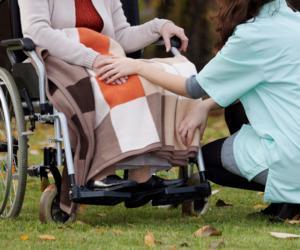What Is Lou Gehrig's Disease?

Introduction
Lou Gehrig's disease is a neurodegenerative disorder that affects the brain and spinal cord. It is also called as amyotrophic lateral sclerosis or ALS. It is a progressive disorder that leads to the loss of voluntary muscle control in the body. This disorder often affects the nerves that control speech, swallowing function, and limb movements. There is still no known cure for this disease.
ALS is popularly known as Lou Gehrig's disease. The term was named after Lou Gehrig, a famous American baseball player who was diagnosed with the disease.
According to surveys, there are about 5,000 to 6,000 individuals in the United States alone who are annually diagnosed with ALS. Moreover, an estimated 20,000 to 30,000 individuals in America are living with this disorder without actually knowing it.
ALS is known to affect individuals from various backgrounds, which include racial, social, and different economic groups. This medical condition is now slowly becoming more common due to an increasingly aging population. Another possibility can also be due to the rise of environmental risk factors.
Causes
This medical condition is classified into two types: sporadic and familial. Most ALS cases are sporadic, which means that anyone can be affected by the disorder. Around 5-10 percent of ALS cases are familial, which means that the disorder can be inherited.
Other causes of the disease are still not clearly understood. However, according to experts, the following factors may contribute to the development of the medical condition:
- Immune system response that targets the motor neurons
- Free radical damage
- Glutamate (neurotransmitter) imbalance
- Abnormal protein buildup within nerve cells
Other potential risk factors include:
- Smoking
- Lead exposure
- Military veteran
Symptoms
The symptoms of ALS also depends on the affected areas of the nervous system. Thus, symptoms may vary from one person to another. The lower half of the brain stem is the medulla, which controls most of the body’s autonomic functions. These functions include the regulation of blood pressure, heart rate, and breathing. Any damage to the medulla can lead to the following issues:
- Hoarseness
- Slurred or slow speech
- Excessive saliva production
- Swallowing difficulty
- Breathing problems
- Tongue atrophy (no control or loss of tongue muscle contour)
- Emotional lability (increased emotional reactions such as uncontrollable crying or laughing)
The corticospinal tract is a part of the brain that is made up of nerve fibers. If an individual has ALS, then the disease can cause damage to the corticospinal tract that leads to weakness and limb spasticity. The anterior horn is the front part of the spinal cord and any kind of degeneration can lead to:
- Twitching in the muscles
- Flaccid paralysis/weakness
- Muscle atrophy
- Breathing problems due to weakness in the diaphragm and respiratory muscles
Some of the early symptoms of the disease include certain problems in performing daily routine tasks:
- Finding it difficult to climb stairs or even get up from a chair
- Speaking or swallowing difficulties
- Hand and arm weakness
Few of the early symptoms are mostly found in specific parts of the body. The symptoms also tend to become asymmetrical, wherein symptoms only occur on one side of the body.
When the disease progresses, the symptoms would also spread to both sides of the body. One common symptom is bilateral muscle weakness. Due to muscle wasting, an individual can also lose weight. However, an individual's senses, urinary tract function, and bowel movements tend to remain intact.
Another symptom seen in ALS is cognitive impairment. An individual can also suffer from certain behavioral changes without mental decline. All patients with ALS tend to experience emotional lability including those who do not have dementia.
Slow thinking or processing speed and inattention are said to be the most common cognitive symptoms observed in ALS sufferers. Degeneration of the cells in the frontal lobe occurs in people with ALS-related dementia. When an individual has a family history of dementia, then it can lead to ALS-related dementia as well.
Risk Factors
The symptoms of ALS usually start to appear between the age of 50-60 years old. However, the symptoms can also appear earlier as well. ALS is also more common in males than the female population.
Diagnosis
Most cases of ALS are diagnosed by a neurologist. However, there are no specific tests to exactly determine if the individual is suffering from ALS. Confirming an ALS diagnosis in an individual can take weeks or even months.
Doctors usually suspect ALS in an individual if there are instances of a progressive neuromuscular decline. There would be an increasing problem with the symptoms, which include:
- Muscle wasting
- Twitching of the muscles
- Muscle cramps and weakness
- Muscle contractures
However, these symptoms can also be due to other medical conditions. Thus, doctors would first rule out the possibility of other medical problems through diagnostic tests, which can include:
- Blood tests to evaluate the general health of the individual.
- Electromyography (EMG) to evaluate and record the electrical activity of the skeletal muscles.
- Nerve conduction study to test the function of the nerves.
- An MRI scan to show the affected parts of the nervous system.
- Genetic testing for those who have a family history of ALS.
Treatment
As the disease progresses, individuals would find it difficult to digest or swallow food. Most patients also have breathing difficulties.
There is also a negative effect on the skin and subcutaneous tissues. Deterioration can occur in many parts of the body. It is also important to appropriately treat them all.
For these reasons, treating individuals with ALS usually involves a team of doctors along with specialists. An ALS team may involve the following specialists:
- Occupational therapist
- Psychiatrist
- A neurologist skilled in the management of ALS
- Well-trained nutritionist
- Social worker
- Gastroenterologist
- Respiratory therapist
- Mental health care professional
- Speech therapist
In such cases, it becomes important for the family members to talk to individuals who are suffering from ALS and offer support when it comes to medical decisions.
Medications
Currently, Rilutek (riluzole) is the only approved drug for ALS treatment. This medication can prolong the life of the individual for several months. However, the drug cannot completely get rid of the symptoms. Other drugs can be used to relieve ALS symptoms. They include:
- Neurodex - a combination of vitamins B1, B6, and B12 to help relieve emotional lability.
- Bisulfate, diazepam, quinine bisulfate, and baclofen - for the treatment of muscle cramps and spasticity.
- NSAIDs, antidepressants, anticonvulsants, and morphine - used for treating or managing pain caused by this medical condition.
The following medications are still under scientific investigation for a subtype of the hereditary form of ALS:
- Creatine
- Coenzyme Q10
- COX-2 inhibitors
- Minocycline
The only issue is that these drugs are still not proven to be effective. There are also talks about the use of stem cell therapy, but it has not shown effectiveness in the treatment of ALS.
Complications
If ALS is not identified on time or not correctly diagnosed and treated, then it can lead to complications or risks such as malnutrition, choking, bed soreness, and pneumonia.
Outlook
The life expectancy of an individual with ALS is said to be around 2-5 years. There is an estimated 20 percent of the patients who are known to live with ALS or Lou Gehrig’s disease for more than five years.
An estimated 10 percent of the population suffering from this disease are known to live for more than 10 years. One of the most common causes of death identified in ALS patients is respiratory failure. Since there is no cure for this disease, medication and support can only help improve the patient's quality of life.















